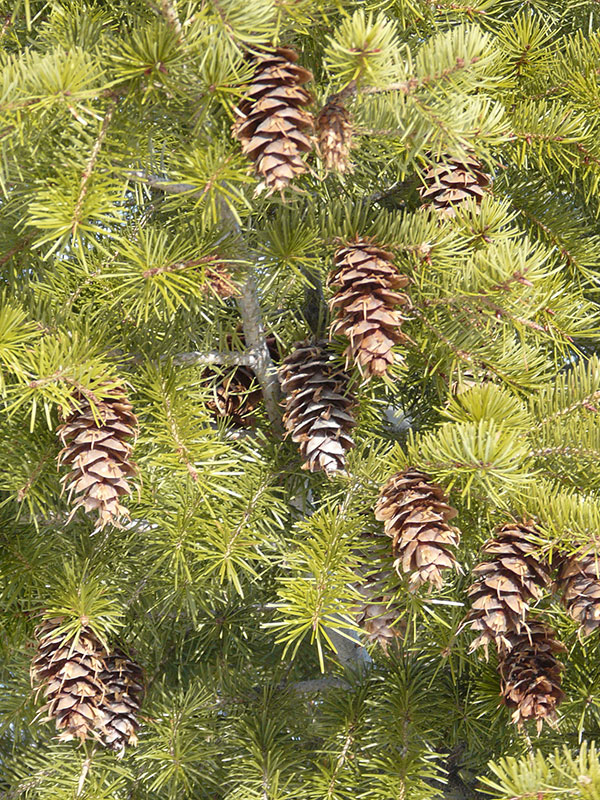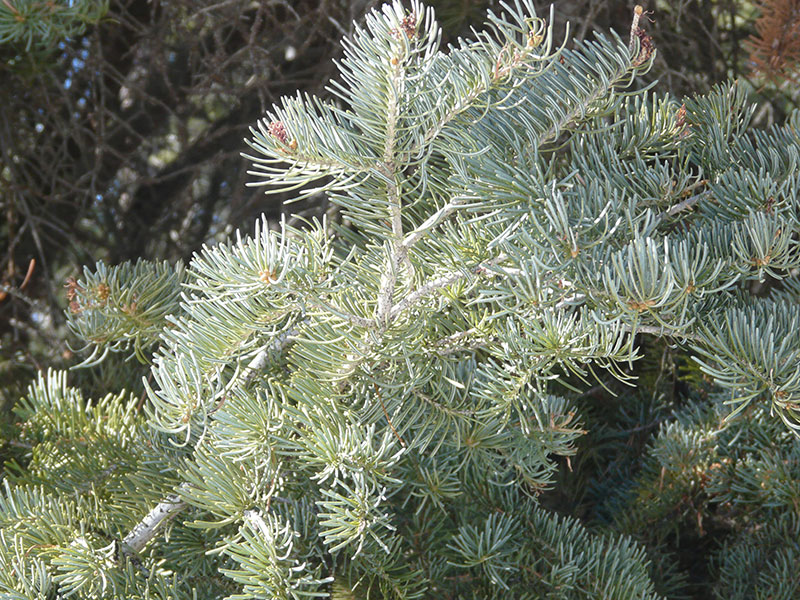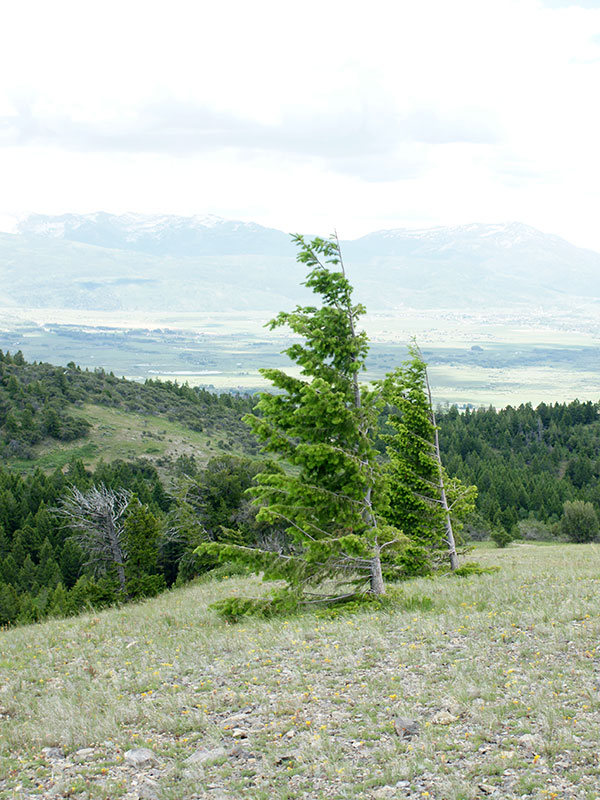Pseudotsuga menziesii / Douglas fir
- persistent cones with distinctive 3-pronged, “mouse tail”, bracts
- semi-pointy, but not stiff or sharp, single needles
- needles attached to twigs by petioles (no pegs)
- oval leaf scars
- twig buds are pointy, “lustrous” brown
Also known as: red fir, doug fir, Oregon pine, British Columbian pine, Douglas spruce, false hemlock
See also: Pine trees, conifers and evergreens
Douglas fir is a magnificent tree, capable of growing to incredible heights. It comes in two varieties, one common on the Pacific Coast (the coastal variety) and one in the Rocky Mountains (the Rocky Mountain variety). The coastal variety is faster growing and larger – up to 250 feet tall and 6 feet diameter. Here, and in the rockies generally, the Rocky Mountain variety also gets up to 6 feet across, but only 150 feet tall. Whether due to past logging or to this being the near one edge of their range or climate generally, the trees in the Valley are much smaller.
By far the most distinctive feature of Douglas fir is the cones, in particular the distinctive 3-pointed bracts sticking out from between the scales. Various descriptive phrases are associated with these, including Triton’s trident and mouse tails. Frequently, you will find these on the ground under or near the trees. There is a story that during a particularly bad fire, mice trying to escape asked the tree – known for its fire resistance – for shelter, and the tree offered the space between the scales. This may not be true.
Beyond the cones, the needles are about 1 inch long, semi-pointy, and soft to the touch (i.e. not stiff and sharp). There is a small petiole at the base (visible in some of the gallery photos). One distinction between these and fir needles is that the latter have a wooden peg rather than just the petiole. Distinguishing Douglas fir from pines, the Douglas fir needles occur singly, not in fascicles. And distinguishing them from subalpine fir, the leaf scars are oval, not round.
Douglas fir needles are more or less flattened, i.e. they won’t roll between your fingers. The Rocky Mountain variety has rather blue-ish foliage. The needles may either surround the twigs, or they may be two flat ranks on opposite sides of the twigs. Both of these is distinctive to the species. If you turn a needle over, there are two white-ish rows of stomates on the lower side, but otherwise, the sides are the same color.
Douglas fir twigs are generally light brown-ish/orange-ish. The buds at the ends are pointy, longer than wide, and reddish (lustrous) brown when mature.
On younger trees, the bark is dark gray-brown with resin blisters. On older trees, the bark is furrowed, thick and corky. (I don’t really think this is all that distinctive, but then, I am still getting used to trying to recognize this from its bark or shape in the wild). It is orange in color on healthy, vigorous trees. The trees are tall and wide (wider than spruce), but again, I don’t find this very distinctive, especially in a crowded, mixed forest.
Douglas fir is generally more abundant on moister sites, but is nevertheless, drought tolerant. You can find it, for example, well above the parking lot at Pine Creek Pass. One drought strategy is to develop deep taproots, especially on drier sites. On the other hand, this tree won’t do well if the soil is poorly drained with a shallow impermeable layer.
Interesting bits – About 25-30% of all standing saw timber in North America is Douglas fir. It is the most harvested tree in Idaho for lumber, but also the most common Xmas tree. Douglas fir wood can be quite beautiful as the heartwood is reddish (hence the name red fir).
As might be expected for such a valuable tree, it has been exported throughout the world for plantations. This doesn’t always work out all that well… like other North American conifers, specifically lodgepole pine from our region, in New Zealand, Douglas fir is considered to be an invasive species, called a “wilding conifer”, and subject to control measures.
| Family | |
|---|---|
| Inflorescence type | |
| When? | |
| Where? |





